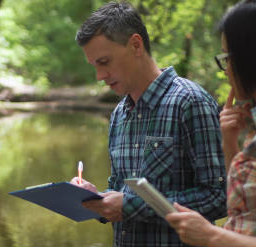Weather balloons have played a pivotal role in meteorology for over a century. From their humble beginnings in the 18th century to their sophisticated modern applications, these high-flying instruments have continually advanced our ability to monitor and predict the weather.
Early Experiments and Invention
The first recorded use of balloons for atmospheric study dates back to the 1700s. In 1783, the Montgolfier brothers launched a hot air balloon in France — a moment that sparked scientific interest in the upper atmosphere. By the late 1800s, researchers began attaching recording devices to gas balloons to study air pressure and temperature at altitude.
Key Milestones in Weather Balloon History
-
1892: Léon Teisserenc de Bort launches hundreds of balloons, discovering the stratosphere.
-
1930s: Radiosondes are introduced, allowing real-time transmission of weather data.
-
1940s: Widespread use of weather balloons during World War II for aviation forecasting.
-
1950s–70s: Balloons are standardized by meteorological organizations across the globe.
-
Modern Day: GPS and digital telemetry revolutionize the accuracy and detail of collected data.
Historical Timeline
| Year |
Event |
| 1783 |
First balloon flight by Montgolfier brothers |
| 1892 |
Stratosphere discovered by Teisserenc de Bort |
| 1930 |
Radiosonde introduced |
| 1943 |
Operational use during WWII |
| Present |
Advanced GPS tracking and data transmission |
Who Benefits from This Historical Knowledge?
Understanding the history of weather balloons is useful for a range of professionals and enthusiasts:
-
Meteorologists: Learn from past practices to improve forecasting models.
-
Educators: Use historical case studies to teach STEM and Earth science concepts.
-
Researchers: Study long-term trends in weather data collection.
-
Historians of Science: Track the evolution of atmospheric research tools.
-
Amateur Weather Hobbyists: Gain appreciation for the technology behind DIY ballooning.

Frequently Asked Questions (FAQs)
-
Who invented the weather balloon?
- No single inventor; the technology evolved over time with major contributions by Léon Teisserenc de Bort and others.
-
When was the first radiosonde used?
- The first practical radiosonde was launched in the early 1930s, revolutionizing atmospheric data collection.
-
How were weather conditions studied before balloons?
- Observations were limited to ground-based instruments, which couldn’t measure high-altitude conditions accurately.
-
How did WWII impact weather balloon development?
- WWII accelerated the use of weather balloons for aviation and military operations, leading to widespread adoption.
-
What has replaced weather balloons?
- Nothing has fully replaced them — satellites and drones complement them, but balloons are still essential for vertical profiling.

Related Posts

Bob Batemen is a dedicated contributor to WeatherScientific.com, bringing a wealth of expertise in weather management and environmental science. Bob combines a deep understanding of environmental systems with practical experience in weather forecasting, climate patterns, and the implementation of sustainable weather-related solutions. Over the years, Bob has developed a keen interest in how climate change impacts global weather patterns, disaster risk management, and the mitigation of extreme weather events.
Bob's professional experience spans both private and public sectors, where they have contributed to the development of weather-sensitive infrastructure, environmental policy, and climate adaptation plans.
As a contributor to WeatherScientific.com, Bob shares insightful articles, guides, and analyses on emerging weather trends, cutting-edge weather technologies, and their environmental implications. Their passion for blending science with practical applications continues to shape their work, providing readers with valuable, informed perspectives on the ever-evolving world of weather and environmental management.





Leave a comment